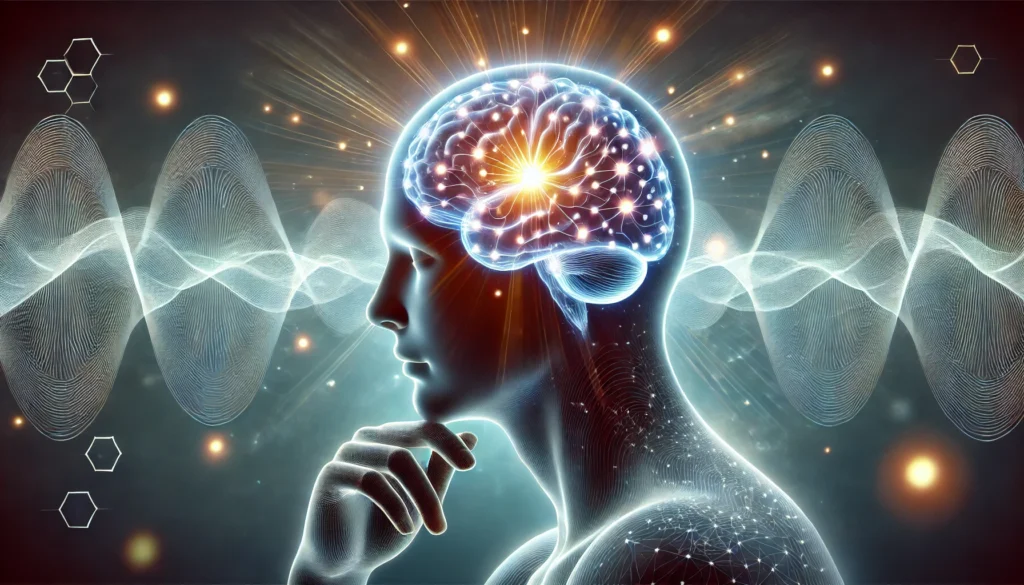In the hustle and bustle of modern life, mental clarity often feels like a distant, elusive goal. The constant barrage of information, multitasking, and stress can cloud our mental faculties, leaving us feeling unfocused and overwhelmed. However, the ancient practice of meditation offers a beacon of hope—an opportunity to enhance clarity and focus through intentional, mindful practices. In this article, we’ll delve into the science and art of meditation, exploring how it can sharpen your mental acuity and provide a sanctuary of peace amidst the chaos.
You may also like: Mindfulness Practices to Sharpen Your Focus
The Science Behind Meditation and Mental Clarity
Meditation, a practice rooted in ancient traditions, has gained significant attention in the scientific community for its profound impact on mental clarity and focus. Various studies have shown that regular meditation can lead to significant changes in brain function and structure. Understanding the underlying science can provide a deeper appreciation of how meditation fosters mental clarity.
Neuroplasticity and Meditation
One of the most remarkable aspects of meditation is its ability to promote neuroplasticity—the brain’s ability to reorganize itself by forming new neural connections. Research has shown that regular meditation practices can increase the thickness of the prefrontal cortex, the part of the brain responsible for decision-making, attention, and personality expression. This enhancement leads to improved focus and clarity, allowing for better cognitive control and emotional regulation.
Furthermore, studies suggest that meditation not only increases grey matter in the brain but also enhances connectivity between different brain regions. This improved connectivity is crucial for efficient information processing and decision-making. By strengthening these neural pathways, meditation supports a more agile and adaptive mind.
Meditation also impacts the default mode network (DMN), a network of interacting brain regions known to be active when the mind is at rest. Regular meditation practices help reduce activity in the DMN, which is associated with mind-wandering and self-referential thoughts. By quieting this network, meditation promotes a more focused and present state of mind.
Reduction of Stress and Its Benefits
Chronic stress is a known adversary to mental clarity. It triggers the release of cortisol, a hormone that, in excessive amounts, can impair cognitive function. Meditation has been shown to reduce cortisol levels, thereby alleviating stress and enhancing mental clarity. Through meditation, practitioners learn to cultivate a state of relaxed awareness, which reduces stress and allows for clearer thinking.
In addition to lowering cortisol, meditation boosts the production of serotonin and endorphins, hormones that promote happiness and relaxation. This hormonal balance not only counters the effects of stress but also enhances mood and cognitive function, making it easier to maintain focus and clarity.
Moreover, meditation teaches individuals to respond to stressors more mindfully. Instead of reacting impulsively, meditators learn to observe their thoughts and emotions, allowing them to navigate challenging situations with greater composure and clarity. This mindful response reduces the mental clutter that often accompanies stress.
Cognitive Benefits Beyond Stress Reduction
Beyond stress reduction, meditation enhances various cognitive functions that contribute to clarity and focus. It improves attention span, allowing individuals to concentrate on tasks for longer periods without succumbing to distractions. This heightened attention is particularly beneficial in environments that demand sustained focus.
Meditation also enhances working memory, the ability to hold and manipulate information in the mind. A robust working memory is essential for problem-solving, decision-making, and complex reasoning. By bolstering this cognitive function, meditation sharpens overall mental acuity.
Furthermore, regular meditation practice can improve emotional intelligence. By fostering a deeper awareness of one’s emotions and those of others, meditation enhances interpersonal skills and empathy. This emotional clarity contributes to more effective communication and decision-making, both personally and professionally.

Meditation Techniques for Clarity and Focus
There are numerous meditation techniques designed to enhance mental clarity and focus. Each technique offers unique benefits, allowing individuals to choose practices that resonate with them. Here are several methods you can incorporate into your daily routine to cultivate mental sharpness.
Mindfulness Meditation
Mindfulness meditation involves paying full attention to the present moment without judgment. By focusing on your breath or a specific object, you train your mind to remain present, enhancing your ability to concentrate and clear mental fog. This practice encourages a state of alert relaxation, where clarity flourishes.
One of the key aspects of mindfulness meditation is the development of a non-reactive awareness. Practitioners learn to observe their thoughts and feelings without becoming entangled in them. This detachment allows for greater mental clarity, as the mind is not clouded by emotional turbulence.
Mindfulness meditation can be practiced anywhere and at any time, making it a versatile tool for enhancing focus. Whether you’re sitting in a quiet room or navigating a busy day, mindfulness helps anchor your attention to the present, reducing distractions and increasing clarity.
Additionally, mindfulness meditation cultivates a sense of curiosity and openness. By approaching each moment with a beginner’s mind, you become more attuned to subtle details and nuances, enriching your perception and understanding.
Transcendental Meditation
Transcendental Meditation (TM) is a technique that involves silently repeating a mantra to settle the mind into a state of profound rest and relaxation. TM practitioners often experience increased creativity, clarity, and focus as the mind becomes more settled and less agitated.
The use of a mantra in TM serves as a focal point, gently guiding the mind away from external distractions and internal chatter. This inward journey leads to a state of deep relaxation, where mental clarity naturally arises.
TM is typically practiced for 15-20 minutes twice a day, providing a structured routine that supports consistency. This regular practice helps reinforce the habit of meditation, making it easier to sustain over time.
Moreover, TM has been shown to reduce anxiety and improve overall well-being. By promoting a sense of inner peace, TM enhances the mind’s ability to concentrate and process information, leading to sharper focus and greater clarity.
Focused Attention Meditation
As the name suggests, focused attention meditation involves concentrating on a single point of focus, such as a candle flame or a sound. This practice improves concentration and trains the mind to maintain focus over extended periods, leading to enhanced mental clarity.
Focused attention meditation strengthens the brain’s ability to filter out distractions. By repeatedly bringing attention back to the chosen focal point, practitioners develop greater control over their mental processes, reducing susceptibility to distractions.
This technique also fosters patience and perseverance. As you work to maintain focus, you build resilience against mental fatigue and wandering thoughts. Over time, this discipline translates into improved clarity and productivity in daily tasks.
Furthermore, focused attention meditation can be customized to suit individual preferences. Whether you prefer a visual object, a sound, or even a physical sensation, this adaptability ensures the practice remains engaging and effective.
Walking Meditation
For those who find sitting meditation challenging, walking meditation offers an alternative. This practice involves being mindful of each step, focusing on the sensations of walking. It is a practical way to incorporate mindfulness into everyday activities, enhancing clarity and focus.
Walking meditation engages both the body and mind, creating a holistic experience that enhances awareness. By synchronizing movement with breath, practitioners cultivate a rhythm that promotes mental clarity and relaxation.
This practice is particularly beneficial for those with busy schedules, as it can be easily integrated into daily routines. Whether you’re walking to work or taking a stroll in nature, walking meditation transforms ordinary moments into opportunities for mindfulness.
Moreover, walking meditation encourages a connection with the environment. By observing the sights, sounds, and sensations around you, this practice fosters a sense of presence and appreciation, enriching your overall experience.

Historical Context and Current Trends
Meditation has been practiced for thousands of years, with its roots deeply embedded in spiritual traditions such as Buddhism, Hinduism, and Taoism. Originally, meditation was used as a tool for spiritual growth and enlightenment. However, in recent decades, its benefits for mental clarity and focus have been recognized in secular contexts as well. Understanding the historical context and current trends provides insights into meditation’s evolution and its role in modern society.
Ancient Roots and Evolution
Meditation’s origins can be traced back to ancient civilizations, where it was often practiced by monks and spiritual seekers. These early practices were closely tied to religious and philosophical teachings, emphasizing the pursuit of enlightenment and self-realization.
As meditation spread across cultures, it evolved to incorporate diverse techniques and philosophies. From Zen meditation in Japan to Vipassana in India, each tradition contributed to the rich tapestry of meditation practices we see today.
Despite these variations, the core principles of meditation—mindfulness, concentration, and self-awareness—remain consistent. These timeless elements continue to guide practitioners in their quest for mental clarity and focus.
The Rise of Meditation in Modern Society
Today, meditation is no longer confined to monasteries and spiritual retreats. It has found its place in corporate boardrooms, schools, and healthcare settings. The integration of meditation into these areas reflects a growing recognition of its benefits for mental clarity, stress reduction, and overall well-being.
In the corporate world, meditation is embraced as a tool to enhance employee productivity and creativity. Companies are incorporating mindfulness programs to reduce stress and improve focus, leading to a more engaged and resilient workforce.
Educational institutions are also recognizing the value of meditation. Schools are introducing mindfulness practices to help students manage stress, improve concentration, and enhance emotional intelligence. This proactive approach supports academic success and personal development.
Moreover, the healthcare industry is increasingly incorporating meditation as a complementary therapy. From managing chronic pain to alleviating anxiety, meditation offers a holistic approach to health and wellness, promoting mental clarity and emotional balance.
Future Implications
As our understanding of meditation deepens, its applications continue to expand. Future research may uncover new insights into how meditation can be tailored to meet individual needs, further enhancing its efficacy in promoting mental clarity and focus. Additionally, the development of digital meditation aids and apps is likely to make meditation more accessible to a wider audience, providing innovative ways to cultivate clarity in an increasingly distracted world.
Advancements in neuroscience and technology are paving the way for personalized meditation experiences. By analyzing brain patterns and individual preferences, future meditation programs could offer customized practices that maximize benefits for each practitioner.
Furthermore, the rise of virtual reality and augmented reality presents exciting possibilities for meditation. These technologies could create immersive environments that enhance focus and relaxation, offering new dimensions to traditional practices.
As meditation continues to evolve, its potential to transform lives remains limitless. By embracing innovation while honoring ancient wisdom, meditation is poised to remain a powerful tool for mental clarity and well-being in the years to come.

Practical Advice for Incorporating Meditation into Your Life
To harness the benefits of meditation for mental clarity, consistency is key. Here are some practical tips to get started and sustain a rewarding meditation practice:
Start Small and Build Gradually
Begin with just a few minutes a day and gradually increase the duration as you become more comfortable with the practice. Starting small helps establish a manageable routine, reducing the likelihood of feeling overwhelmed or discouraged.
As you gain confidence in your practice, experiment with different meditation techniques to find what resonates with you. This exploration keeps your practice engaging and allows you to discover methods that enhance your clarity and focus.
Remember that meditation is a journey, not a destination. Embrace each session as an opportunity for growth and self-discovery, allowing your practice to evolve naturally over time.
Create a Consistent Routine
Set aside a specific time each day for meditation. Consistency helps reinforce the habit and makes it easier to integrate into your daily life. Whether it’s in the morning to start your day with clarity or in the evening to unwind, find a time that aligns with your schedule and intentions.
Establishing a dedicated meditation space can also support consistency. Choose a quiet, comfortable place where you can meditate without distractions. This designated area becomes a sanctuary for reflection and relaxation, enhancing the quality of your practice.
Consider using reminders or alarms to prompt your meditation sessions. These cues serve as gentle nudges to prioritize your practice, even amidst a busy schedule.
Embrace Patience and Self-Compassion
Meditation is a skill that takes time to develop. Be patient with yourself and allow your practice to evolve naturally. Embrace each meditation session without judgment, acknowledging that fluctuations in focus and clarity are part of the process.
Cultivate self-compassion by celebrating small victories and progress. Whether it’s a moment of stillness or a fleeting sense of clarity, these experiences contribute to your overall growth and well-being.
If you encounter challenges or distractions, view them as opportunities for learning and resilience. Each moment of awareness strengthens your ability to return to the present, deepening your meditation practice.
Use Guided Meditations and Resources
If you’re new to meditation, consider using guided meditations to help you stay focused and engaged. Guided sessions provide structure and support, making it easier to navigate the nuances of meditation.
Explore meditation apps, online courses, and community groups to access a wealth of resources. These platforms offer diverse practices and expert guidance, enriching your meditation journey.
Additionally, consider attending meditation workshops or retreats to deepen your understanding and experience. These immersive environments provide valuable insights and inspiration, enhancing your commitment to meditation.
Conclusion
In a world where clarity and focus are often compromised by constant stimulation and stress, meditation offers a powerful solution. By incorporating meditation into your daily routine, you can enhance mental clarity, improve focus, and cultivate a sense of peace and well-being. As you explore different meditation techniques, remember that the journey to mental clarity is a personal one, and the benefits extend far beyond the practice itself. Embrace meditation as a lifelong tool for achieving clarity and focus, and discover the transformative power it holds.
Meditation invites you to reconnect with your inner self, fostering a profound sense of awareness and presence. This inner clarity empowers you to navigate life’s challenges with grace and resilience, enriching your overall experience.
As you continue your meditation journey, remain open to new insights and experiences. Allow meditation to be a source of inspiration and transformation, guiding you toward greater clarity and fulfillment.
Further Reading:
The Benefits of Meditation: 10 Minutes to Peace, Clarity, and Focus
Important Note: The information contained in this article is for general informational purposes only, and should not be construed as health or medical advice, nor is it intended to diagnose, prevent, treat, or cure any disease or health condition. Before embarking on any diet, fitness regimen, or program of nutritional supplementation, it is advisable to consult your healthcare professional in order to determine its safety and probable efficacy in terms of your individual state of health.
Regarding Nutritional Supplements Or Other Non-Prescription Health Products: If any nutritional supplements or other non-prescription health products are mentioned in the foregoing article, any claims or statements made about them have not been evaluated by the U.S. Food and Drug Administration, and such nutritional supplements or other health products are not intended to diagnose, treat, cure, or prevent any disease.


